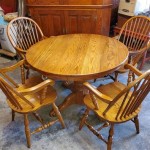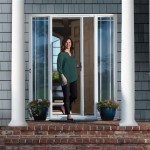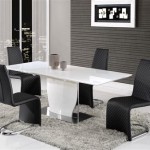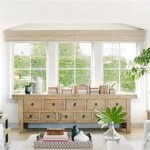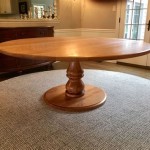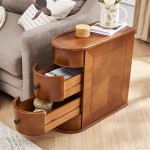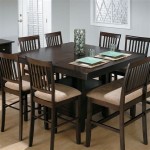The Enduring Appeal of the Glass Top Mid-Century Coffee Table
The mid-century modern aesthetic, characterized by clean lines, organic shapes, and a focus on functionality, continues to captivate design enthusiasts. Within this popular style, the glass top coffee table holds a special place. It represents a marriage of elegance and practicality, seamlessly integrating into diverse interior spaces while adding a touch of sophisticated minimalism. The transparency of the glass, combined with the often intricate and sculptural bases, creates a striking visual statement that enhances the overall ambience of a room.
The evolution of furniture design in the mid-20th century saw a departure from the heavier, more ornate styles of previous eras. Influenced by Bauhaus principles and Scandinavian design, furniture makers began to embrace simplicity, using materials like wood, metal, and glass to create pieces that were both beautiful and functional. The glass top coffee table emerged as a prime example of this new design philosophy, offering a light and airy alternative to solid wood tables while showcasing the artistry of the supporting base.
The materials used in these tables were carefully selected to complement the overall design. Tempered glass, prized for its strength and safety, provided a durable and aesthetically pleasing surface. Wood bases, often crafted from walnut, teak, or birch, were meticulously shaped and finished to highlight their natural grain and texture. Metal, particularly chrome and brass, was also incorporated, adding a touch of industrial chic and enhancing the table's structural integrity.
Key Point 1: The Versatility of Design and Placement
One of the major reasons for the enduring popularity of the glass top mid-century coffee table lies in its unparalleled versatility. This type of table can seamlessly integrate into a wide range of interior design schemes, from minimalist and Scandinavian-inspired spaces to more eclectic and bohemian settings. The transparent surface allows the surrounding décor to shine, preventing the table from visually overpowering the room. The bases, however, can range from simple geometric forms to elaborate sculptural designs, allowing for customization and personal expression.
The placement of a glass top mid-century coffee table is equally flexible. It works well as a centerpiece in a living room, providing a focal point for conversation and relaxation. It can also be used in smaller spaces, such as apartments or dens, where its transparency helps to create a sense of openness and airiness. Furthermore, it can complement a variety of seating arrangements, from traditional sofas and armchairs to more contemporary modular seating systems. The key is to consider the overall scale and proportions of the room and choose a table that is appropriately sized and styled.
The size and shape of the table also contribute to its versatility. Round coffee tables are ideal for creating a softer, more intimate atmosphere, while rectangular tables are better suited for providing ample surface area for books, magazines, and other items. Oval or organically shaped tables offer a unique and visually interesting alternative, adding a touch of whimsy to the space. The choice ultimately depends on the specific needs and preferences of the individual and the overall style of the room.
Beyond the living room, a glass top mid-century coffee table can also find a place in other areas of the home. It can serve as a stylish side table in a bedroom, providing a surface for lamps and other bedside essentials. It can also be used in a hallway or entryway, adding a touch of elegance and sophistication to these often-overlooked spaces. The possibilities are endless, limited only by imagination and design considerations.
Key Point 2: Materials and Construction Techniques
The quality of a glass top mid-century coffee table is directly related to the materials used in its construction and the craftsmanship involved in its creation. High-quality tempered glass is essential for ensuring durability and safety. This type of glass is significantly stronger than ordinary glass and is designed to shatter into small, relatively harmless pieces if broken. The thickness of the glass also plays a role, with thicker glass generally being more resistant to scratches and chips.
The choice of wood for the base is equally important. Walnut, teak, and birch are all popular choices, prized for their rich color, distinctive grain patterns, and inherent durability. Solid wood construction is generally preferred, as it offers superior strength and longevity compared to veneers or engineered wood products. The joinery techniques used in the construction of the base are also critical, with mortise and tenon joints, dovetail joints, and other traditional methods ensuring a tight and secure fit.
Metal bases, often crafted from chrome or brass, require careful attention to detail and quality finishing. Chrome provides a sleek and modern look, while brass adds a touch of warmth and elegance. The metal should be properly polished and sealed to prevent rust and corrosion. Welding and brazing techniques are used to join the metal components, ensuring a strong and stable structure. The overall design of the base should be both aesthetically pleasing and structurally sound, capable of supporting the weight of the glass top and any items placed on it.
The finishing process is also crucial to the overall quality and appearance of the table. Wood bases are typically finished with a clear lacquer or varnish, which protects the wood from scratches and stains while enhancing its natural beauty. Metal bases are often powder-coated or electroplated, providing a durable and attractive finish. The finishing process should be carefully controlled to ensure a uniform and consistent appearance, free from imperfections or blemishes.
Key Point 3: Identifying Authentic Mid-Century Pieces and Replicas
The popularity of mid-century modern design has led to a proliferation of both authentic vintage pieces and contemporary replicas. Distinguishing between the two requires careful observation and a basic understanding of the design characteristics and manufacturing techniques of the mid-century era. Authentic pieces often bear markings or labels from the original manufacturer, which can provide valuable information about their origin and age.
Examining the construction details can also help to determine the authenticity of a piece. Look for signs of handcraftsmanship, such as hand-sanded edges, hand-rubbed finishes, and evidence of traditional joinery techniques. Replicas, on the other hand, are often mass-produced using modern materials and manufacturing processes. The quality of the materials and the level of attention to detail are typically lower in replicas compared to authentic pieces.
The style and design of the table should also be considered. Authentic mid-century pieces typically adhere to the specific design principles and aesthetic conventions of the era. Replicas may attempt to emulate these characteristics, but they often lack the subtlety and refinement of the original designs. Comparing the piece to known examples of mid-century modern furniture can help to identify any discrepancies or inconsistencies.
The price of the table can also be an indicator of its authenticity. Authentic mid-century pieces are generally more expensive than replicas, reflecting their historical significance, rarity, and craftsmanship. However, price alone is not a definitive indicator, as some unscrupulous sellers may attempt to pass off replicas as authentic pieces. It is always advisable to do thorough research and consult with experts before making a purchase.
Ultimately, the decision of whether to purchase an authentic mid-century coffee table or a replica depends on individual preferences and priorities. Authentic pieces offer a tangible connection to the past and a unique sense of character and history. Replicas, on the other hand, can provide a more affordable and accessible way to incorporate the mid-century modern aesthetic into one's home. Regardless of the choice, a glass top mid-century coffee table remains a stylish and functional addition to any interior space.
The enduring appeal of the glass top mid-century coffee table is a testament to its timeless design, functional versatility, and the enduring influence of the mid-century modern aesthetic. Its ability to seamlessly integrate into diverse interior styles while adding a touch of elegance and sophistication ensures its continued popularity among design enthusiasts for years to come. From its carefully selected materials to its meticulously crafted construction, the glass top mid-century coffee table embodies the principles of good design and enduring quality.

36 Mid Century Modern Coffee Tables That Steal Centre Stage Table Designs

36 Mid Century Modern Coffee Tables That Steal Centre Stage

Mid Century Coffee Tables Modern Furniture Chicago
Mid Century Glass Top Coffee Table Oow Modern Vintage Furniture Shop Archieve

Wasco Mid Century Modern Coffee Table With Glass Top Christopher Knight Home

Tessa Smokey Glass Top Mid Century Coffee Table The Design Ark

Unidentified Kagan Inspired Wood And Glass Two Tiered Coffee Table Fro Mid Century Modern Round

36 Mid Century Modern Coffee Tables That Steal Centre Stage

Solid Teak Mid Century Coffee Table With Glass Top Handcrafted Etsy

Vintage Mid Century Wooden Side Or Coffee Table With Glass Top For Sale At Pamono

